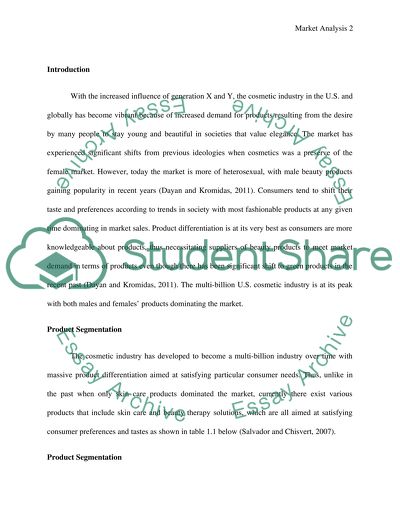Cite this document
(“Analyse the marketing environment for the cosmetics industry in a Essay”, n.d.)
Analyse the marketing environment for the cosmetics industry in a Essay. Retrieved from https://studentshare.org/marketing/1676445-analyse-the-marketing-environment-for-the-cosmetics-industry-in-a-country-of-your-choice-in-your-essay-develop-an-argument-that-deals-specifically-at-the-socio-cultural-patterns-and-trends-in-habits-particularly-in-relation-to-male-versus-female-groomin
Analyse the marketing environment for the cosmetics industry in a Essay. Retrieved from https://studentshare.org/marketing/1676445-analyse-the-marketing-environment-for-the-cosmetics-industry-in-a-country-of-your-choice-in-your-essay-develop-an-argument-that-deals-specifically-at-the-socio-cultural-patterns-and-trends-in-habits-particularly-in-relation-to-male-versus-female-groomin
(Analyse the Marketing Environment for the Cosmetics Industry in a Essay)
Analyse the Marketing Environment for the Cosmetics Industry in a Essay. https://studentshare.org/marketing/1676445-analyse-the-marketing-environment-for-the-cosmetics-industry-in-a-country-of-your-choice-in-your-essay-develop-an-argument-that-deals-specifically-at-the-socio-cultural-patterns-and-trends-in-habits-particularly-in-relation-to-male-versus-female-groomin.
Analyse the Marketing Environment for the Cosmetics Industry in a Essay. https://studentshare.org/marketing/1676445-analyse-the-marketing-environment-for-the-cosmetics-industry-in-a-country-of-your-choice-in-your-essay-develop-an-argument-that-deals-specifically-at-the-socio-cultural-patterns-and-trends-in-habits-particularly-in-relation-to-male-versus-female-groomin.
“Analyse the Marketing Environment for the Cosmetics Industry in a Essay”, n.d. https://studentshare.org/marketing/1676445-analyse-the-marketing-environment-for-the-cosmetics-industry-in-a-country-of-your-choice-in-your-essay-develop-an-argument-that-deals-specifically-at-the-socio-cultural-patterns-and-trends-in-habits-particularly-in-relation-to-male-versus-female-groomin.


